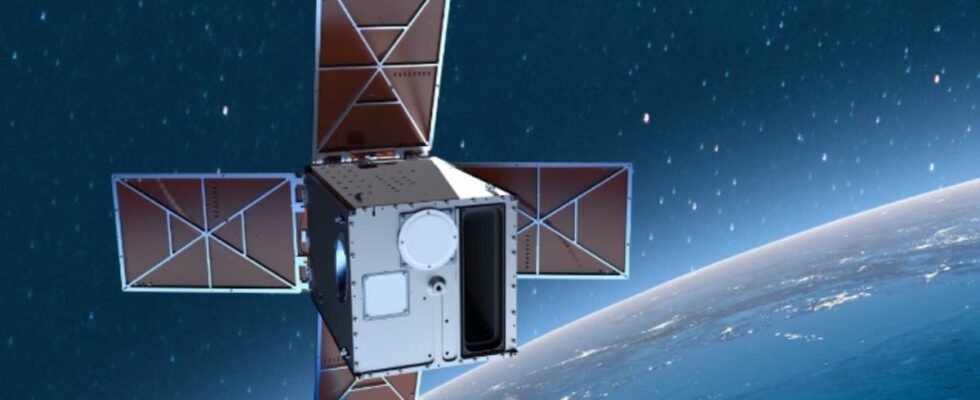One of the nuggets of “new space” in Europe, the start-up Aerospacelab of Belgian Benoît Deper, has just set foot in France, in Mérignac, near Bordeaux. It intends to launch soon a constellation of observation satellites at a lower cost, using, like Space X, the “vertical integration” method, understanding that it will design most of the components itself of its satellites.
Two big names in aerospace have been recruited to lead the French office, Pierre-Guy Amand – former innovation director at Arianespace – as managing director, and general Jean-Daniel Testé – former Joint Space Commander – as President. The Merignac team, which has settled on a plateau within the new office complex of the 45th Parallèle, located at the foot of the airport, is currently made up of eight people, but the start-up is in the process of recruitment of engineers, with the aim of reaching thirty employees by the end of the year.
Aerospacelab has a total of more than 200 people to date. The Belgian company raised 40 million euros in 2022, and announced its intention to create by 2025 in Charleroi a “megafactory”capable of producing 500 satellites per year, which would make it the largest satellite factory in Europe.
Constellation of observation satellites
The goal ultimately of the Belgian company is to create the “European Planet”, named after this American company which has already put more than 200 observation satellites into orbit, in particular for the benefit of Google, which uses it for its Google Maps mapping service. Aerospacelab thus plans to put a constellation of observation satellites into orbit, for both civilian and military use.
And it is in France that the “security/defense market” will be developed, explains Jean-Daniel Testé. And not just for observation. “We also want to carry out missions on themes such as mobility in space and services in orbit, the idea being to carry out refueling or change of orbit, for example. »
Space “garbage trucks”
The ultimate objective will also be to ensure the safety of European satellites in space. “We must be able to intervene in the event of a threat to our satellites, supports the former space commander. This is an issue that is becoming increasingly important, especially since 2017 and the affair of the Russian Louch-Olymp satellite, came to carry out an unfriendly activity next to a Franco-Italian military communication satellite. Events of this type have followed one another since. »
However, it will be necessary to be able to provide this protection “without creating debris, because there is already far too much in space” advances Jean-Daniel Testé, stressing that “out of 30,000 space objects, more than 20,000 are inert objects . “Space robotics will allow us to clean up this debris in orbit, maintains Pierre-Guy Amand, and this will also be one of Aerospacelab’s objectives, with sorts of garbage trucks. But garbage trucks from space. We are therefore no longer talking about nanosatellites, which Aerospacelab planned to build when it was created in 2018, but about satellites of at least 150 kg capable of carrying enough “payload”. »
Dusting off space in Europe
Agility and cost reduction are the watchwords within the Belgian start-up, which intends to dust off the world of space in Europe, “which still works too much in “arsenal” mode, it must undergo its transformation”. The objective is to “divide by ten” the cost of satellites, compared to what is currently on the market. Vertical integration will be the first lever, and the French branch will be responsible for developing a “low cost” propulsion system. “We are going to internalize orbital propulsion, because it is a key element which is currently far too expensive on the market, explains Pierre-Guy Amand. It will be a chemical propulsion, based on hydrogen peroxide (H2O2). »
Another source of savings: partnerships with the “academic body”. Aerospacelab will thus rely for its engine tests on “Isae-Ensma, the Higher Institute of Aeronautics and Space, a center of excellence located in Poitiers”. Production will take place in an industrial center in the region. “There is enough land with secure environments in New Aquitaine to manufacture propulsion systems. »
“Not healthy to be in the hands of Space X”
As for the “space robotics” part on board the satellites, “we will collaborate with a very advanced laboratory in Europe, the LaBRI (Bordeaux computer research laboratory)” explains Pierre-Guy Amand.
Finally, the last lever for savings: “we are aiming for the most reliable launchers at controlled costs,” announces Jean-Daniel Testé. We have already reserved Transporter 9, 10 and 11 [prochaines missions spatiales de Space X], although we are obviously discussing with Ariane as well. “It’s not healthy to be in the hands of Space X, admits Pierre-Guy Amand, and we all want Ariane 6 to fly quickly and be competitive. This is key for the European community. »

